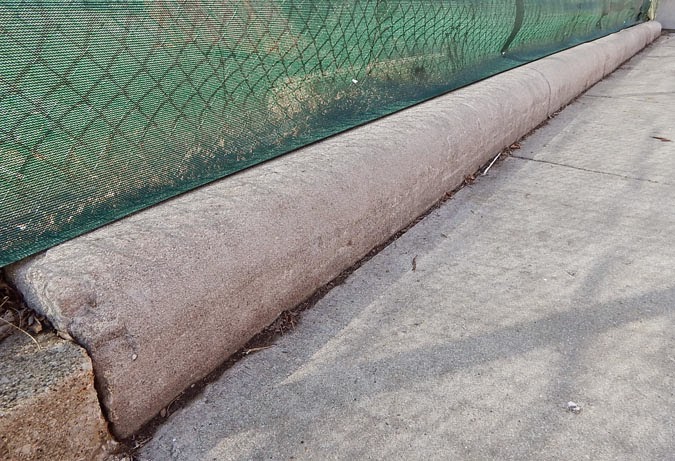During the last twenty years, as the Prairie Avenue District has been
reborn as a desirable residential neighborhood, bits and pieces of its history
have been unearthed as construction equipment disturbs the sites of long
vanished houses. In many cases, the
sites have laid undisturbed for decades beneath a thick layer of asphalt for a
parking lot, or a concrete slab for a warehouse. Such was the case of the former site of the long
vanished Philander C. Hanford house.
Built in 1883 at 2008 S. Calumet Avenue, the home of the oil magnate and
art collector was the largest on that street, and rivaled the finest homes on
Prairie Avenue and the entire city.
Designed by architect Henry S. Jaffray, the massive pile was faced in
Connecticut brownstone and featured beautifully designed interiors from the
hand of Isaac Scott. But the history of
the house was not a happy one. Just ten
years after moving into his palatial home, Hanford committed suicide due to
business reverses, and his family abandoned the house and city, leaving a
caretaker to care for the property.
After sitting unoccupied for decades, the structure was seriously
damaged by fire before succumbing to the wrecker’s ball in 1953.
Rubble from the structure was used to fill in the basement before the
site was paved over for a parking lot for employees of the nearby R. R.
Donnelley & Sons printing plant. But
soon after, a section of the parking lot caved in, taking several cars along
with it. It was discovered that the
Hanford house had been constructed with a double basement, and only the top
level had been filled in during demolition - the added weight of the cars
causing the large sinkhole.
After that incident, the house was largely forgotten until 2001, when
the site was excavated in preparation for a development of new townhouses that
occupy the site today. As bulldozers peeled
away the asphalt and began digging, they uncovered the thick limestone walls of
the Hanford house foundation, still largely intact. Rubble and dirt was hauled away until the
huge footprint of the house was fully revealed.
Jack Simmerling, who had been fascinated with the house since first
touring it more than 50 years earlier, was on site, capturing these images. For the first time since the early 1950s, huge
blocks of brownstone saw the light of day, providing onlookers with a glimpse
of the former grandeur of the house.
Remnants of chimneys that served the many fireplaces were uncovered as
were countless smaller fragments ranging from window glass to tiles, and metal
hardware to bottles and china.
An interesting find was a large locked safe brought to the surface – the
source of much conversation amongst the demolition crew. Like all the other pieces being unearthed
however, it was loaded onto a truck and sent off only to be reburied as
landfill, without ever being opened. The
secrets of any treasures it might have contained going with it.
Simmerling was able to salvage some small pieces as seen in this image
and the one below. One wonders how he
must have felt walking amongst the bits and pieces of the house he had known so
well, glimpsing the shattered remnants that he thought had been lost to
time. Fortunately, however, these are
not the only pieces of the fabled house to survive. Before the building was demolished, Simmerling,
then just 17 years old, salvaged dozens of tiles, carved wood mouldings, and
pieces from the elaborate windows, some of which are now displayed in the
Simmerling Gallery of Prairie Avenue History at Glessner House Museum. Viewing these pieces today, along with
paintings and building models created by Simmerling, one can get a sense of the
exquisite craftsmanship that went into the building of this house. During 2001, the site of the house was
stripped of all traces of the building that once stood there, but we are
fortunate that Jack Simmerling had the foresight to rescue what he could so
that future generations will always be able to appreciate this home and the many
others that made the Prairie Avenue neighborhood the finest in the city.
NOTE: On Tuesday March 31, 2015 at 7:00pm, Glessner House Museum will host “Unearthing Chicago,” a program of
Clarke House Museum featuring Eric Nordstrom, owner of Urban Remains. He will discuss several recent digs at locations
throughout the city including Wolf’s Point and the former site of the c. 1855
John Kent Russell house, explaining what layers of trash and debris from prior
generations reveal about the development of the city we know today. The program is free, for more information
call 312.326.1480.










































